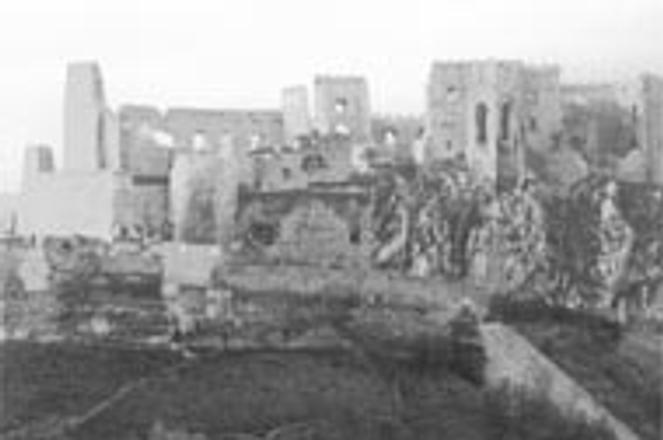Beckov castle ruins in the Small Carpathians are both accessible and beautiful.Matthew Evans
The rocky outcrops of the western Slovakia's Carpathian foothills provided ideal perches for medieval fortresses. Some repelled attackers more effectively than others, but nearly all have fallen into ruin over the centuries for various reasons.
Devín and Pajštún, the closest to Bratislava, were blasted to bits by Napoleon. Further north, František Ráckoczi's Hungarian rebel army torched Čachtice. Beckov was ravaged by flames and subsequent neglect during relatively peaceful times.
Today, these craggy remains of once-grand fortresses stir the imagination. But their actual history is not that of knights in shining armour battling dragons to save damsels in distress. Some tales, like that of Alžbeta (Elizabeth) Báthory are downright gruesome. Legend has it that in the 16th Century, "Lady Dracula" tortured and murdered young ladies - servants, peasants and finally noblewomen - by the hundred during her reign. Some say she bathed in the blood of young virgins to preserve her own striking beauty. Eventually, the nobles noticed something was amiss and took action. Her accusers tripped over a fresh victim as they stormed the fortress. She was convicted and lived her final days imprisoned in her own castle.
Nearby Beckov, one of Slovakia's most striking ruins, towers above the tiny village of the same name from a 100 meter cliff. Thanks to recent restoration work, the former palace of opulent lords is a beautiful place to spend an hour exploring. Though Beckov's history is not as colorful as Čachtice's, it is rich nevertheless.
The earliest enclosed settlement discovered atop the Beckov cliff dates from Roman times. However, the written history of the present-day castle, originally known as "Castrum Blundus," begins in 1208 with a chronicle by an anonymous notary employed by King Bela III of Hungary. The relatively modest watchtower soon became one of the few impregnable castles along the borderland between the Bohemian and Hungarian kingdoms. The Turks ravaged the town but didn't manage to seize the castle in their 1599 raid.
In 1388, King Mathius Csák of Trenčín gave the castle to Duke Štibor of Štiborice. The Štibor family built the upper west palace in the 14th and 15th centuries, adding the Gothic chapel, an extravagant noblemen's residence and the lower defence system. Later, in the 16th century, the Banffý family converted the castle into a Renaissance mansion. After the Banffý family line petered to a halt, however, the castle began to fall into ruin. It was finally abandoned after a fire in 1715.
20 crowns gets you through the spiked, wraught iron gate into a vast courtyard. A walkway takes you across a former drawbridge to a wooden stairway, which leads up over steep rock to the upper palaces. There you can duck through passages, check out the dungeon, and peer through crumbling windows at the valley far below. The crown jewel is the roofless Gothic chapel, with its nobly peaked windows.
The gateway to Beckov and Čachtice castles is the nondescript industrial town of Nové Mesto nad Váhom, about an hour and a half from Bratislava along the main Košice train line. It's possible to hit both castles in one day if you get an early start.
Beckov is a half-hour bus ride from Nové Mesto, and there is no train connection. Weekend buses leave the train/bus station at 7:30, 11:20, 13:20, 15:50 and 18:15. Get off at the last stop and follow the yellow trail up past the old Jewish cemetery to the castle.
To reach Čachtice, take a 15-minute local train to the village of Višňove. Then hike up the hill to the ruin. If you are approaching from Čachtice, follow the blue trail three kilometers across the sweeping hillside. But wherever you come from, check return bus times before you get carried away, to avoid getting stranded in Nové Mesto. The last train back to Bratislava leaves at 19:00.


